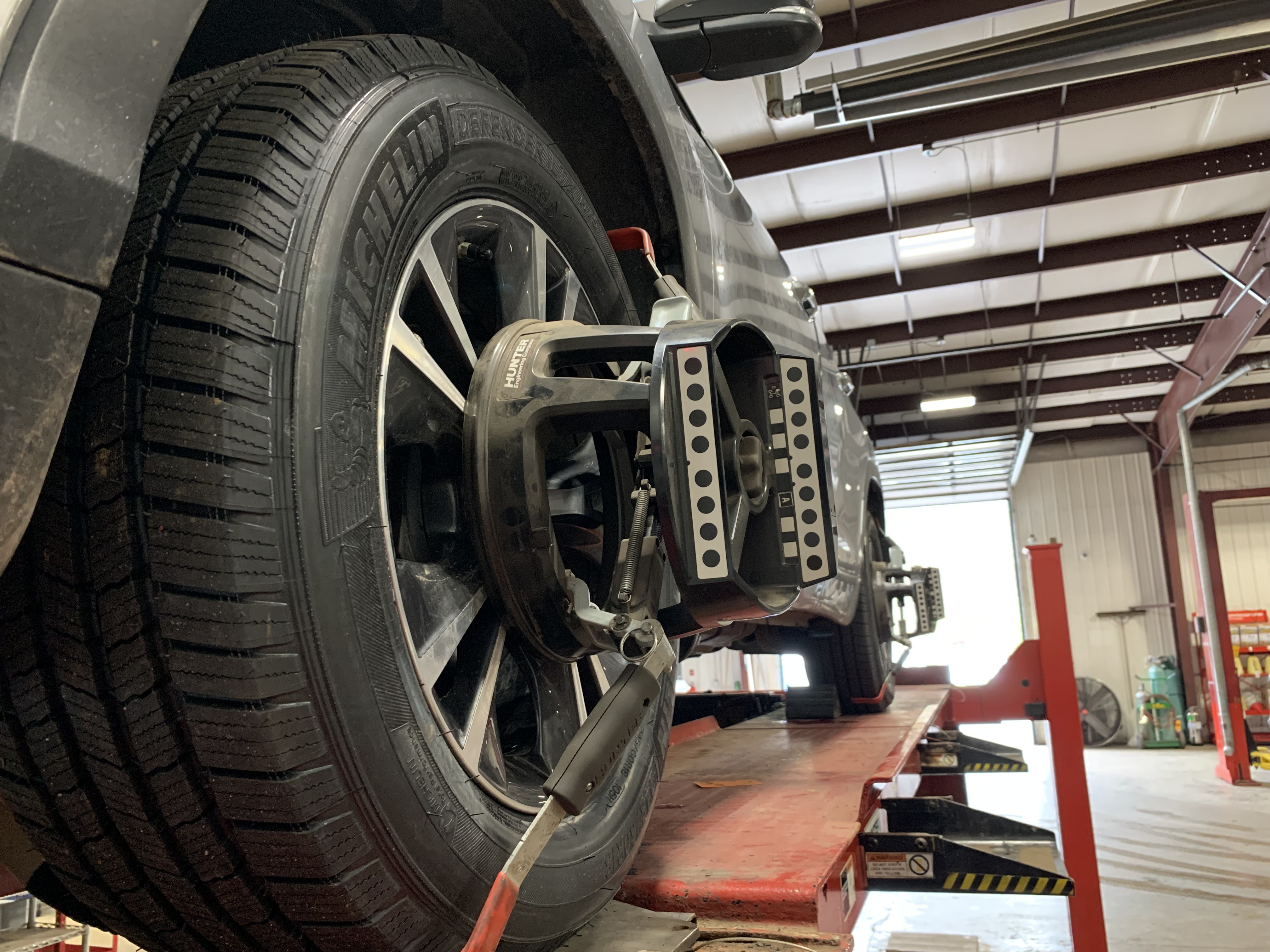Posted on 4/27/2022

Many people confuse tire alignment with tire balancing and vice versa. While both services provide a smoother and seamless ride, these two services are not the same. Here's what you need to know about their differences. What is a Tire Alignment? Tire alignments (wheel alignments) are adjustments made to a vehicle's suspension system. This is where the vehicle connects to its wheels. This is not a change to the tires themselves. Our mechanics adjust the wheel angles to make sure the tires are making proper contact with the road. What are the Signs of Misalignment? Uneven Tread Wear Vehicle Pulling to the Left or Right Steering Wheel is Off-Center When Driving Straight Steering Wheel Vibration Squealing Tires What is Tire Balancing? A tire balancing service ensures the tire has an even weight distribution. And is usually performed along with a tire alignment service. Weight imbalances of just an oun ... read more
Posted on 4/7/2022

Why Do I Have To Rotate and Balance My Tires? Tire rotations and balancing are often overlooked when it comes to auto maintenance services. While they may seem unimportant, these services are extremely beneficial to the health of your tires. Regularly balanced and rotated tires prevent uneven tire wear and ensure that your tires last longer overall. WHAT IS A TIRE ROTATION? A tire rotation is when your tires are moved from one position to another. For example, a front tire is moved to the back and vice versa. This helps to ensure that the wear on all of the tires stays even over a period of time. WHAT IS TIRE BALANCING? Tire balancing adjusts the tire mounting to ensure that all tires are equally balanced so one side of the tire doesn't have more pressure than the other. It is another way to make sure that your tires wear evenly. These two services can increase the longevit ... read more
Posted on 2/4/2022

Why is my TPMS light on? There is always a level of concern that we feel whenever we are driving down the road and we hear that little “ding” and see that something has lit up on the dashboard. Is it a small, easily fixed problem coming up, or something much worse? One indicator that you might see light up is the TPMS, or tire pressure monitoring system. If you have not seen it before, it looks like a horseshoe with an exclamation point in it. When the TPMS light comes on it means one of two things; either your tire pressure is too high, or it is too low in one or more of your tires. Let’s talk about what you should do when this happens. Check the recommended tire pressure for your car Your car should have a recommended pressure for your front and wheel tires written on the doorjam of the driver’s door. If not, check your vehicle’s manual for the correct numbers. Sometimes, the front tire pressure is meant ... read more
Posted on 9/1/2019

We are asked this question a lot! The All-Season Tire was introduced into the marketplace, providing motorists with better Winter Driving Performance than a Summer Tire. And the opportunity to avoid the cost and inconvenience of the biannual Winter Tire changeover. Even though All-Season Tires can provide safe All-Weather Performance, Winter Tires are more efficient once temperatures start to fall. Advances in tire tread compound and tread design have improved driving performance across the entire spectrum of tires, but especially with respect to Winter Tires. Modern Winter Tires offer up to 50% or more winter traction than All-Seasons. All Tire rubber will begin to stiffen as the weather gets colder, but the latest generations of Winter Tires maintain their elasticity even at extremely low temperatures approaching -22⁰F and below, thus providing superior traction and grip. Today’s Winter Tires are not only designed to ... read more